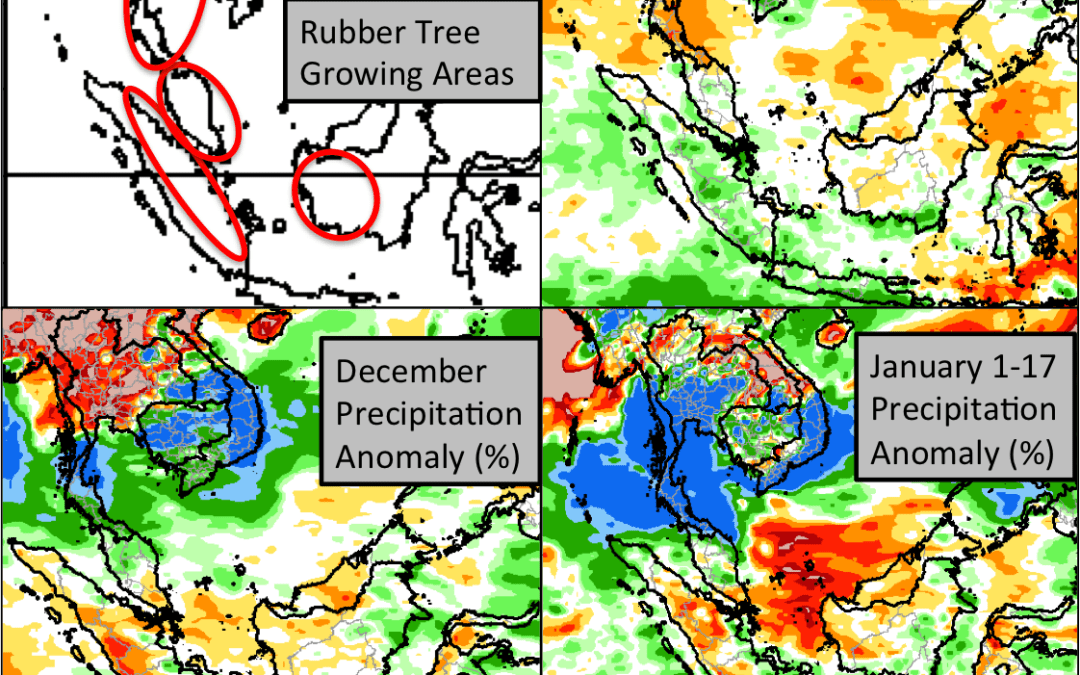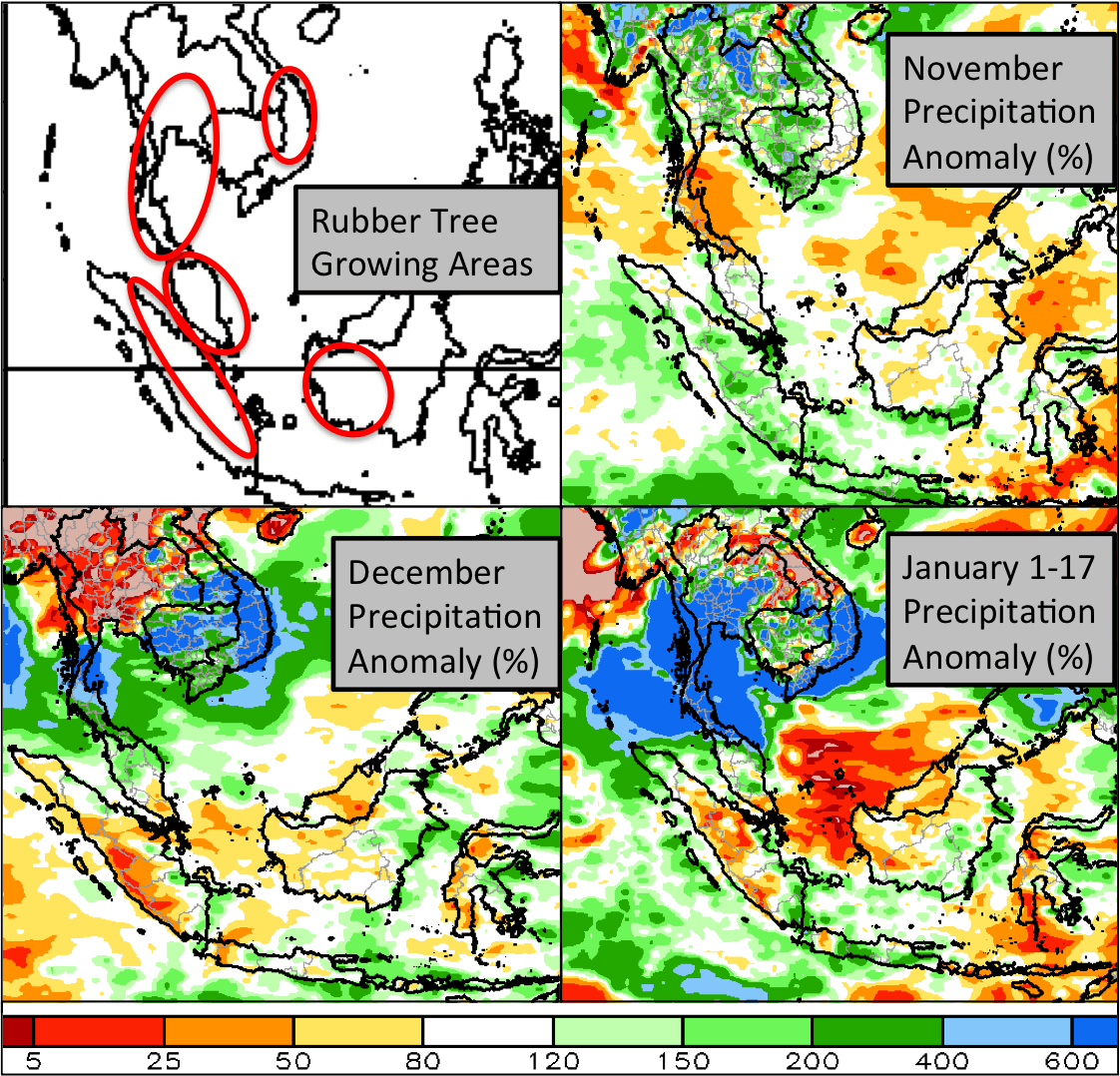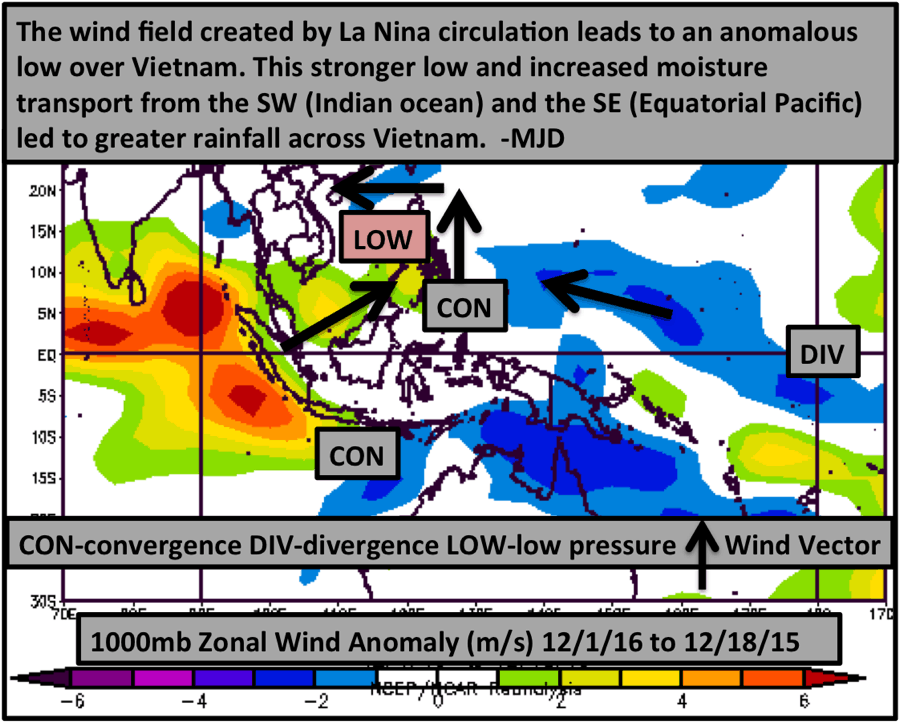Rubber prices have increased more than 60% on the Tokyo Commodity Exchange since October. Rubber is not traded on an exchange in the U.S., but can impact U.S. companies that need it for their products, such as the tire and industries. China helped drive foreign futures prices higher, with greater demand of rubber for tires. Lately, car sales have increased in China due to a government tax break.
The image above shows the price of rubber (yen/kg). Credit: Tokyo Commodity Exchange
However, the main impetus for this futures rally appears to be tied to the above normal rainfall in most of the Indo-Pacific region since December. This has limited the harvest of latex from rubber trees. Southern parts of Thailand, the world’s largest rubber exporter, were most severely impacted.
Here is a graphic we sent to clients about a month ago, giving them a heads up on the flooding in Vietnam Robusta areas and Thailand sugar areas. The La Nina sea surface temperature pattern lead to anomalous low level convergence and divergence zones along the equator. Changes in the wind field create an anomalous low near Vietnam, causing onshore flow of warm moist air. Above normal rainfall can occur across SE Asia in the winter months, extending the rainy season past November in Vietnam. On top of impacting rubber, this flooding caused delays to the sugar harvest in Thailand and damaged Robusta trees in Vietnam.
Image Credit: NOAA, NCEP/NCAR















